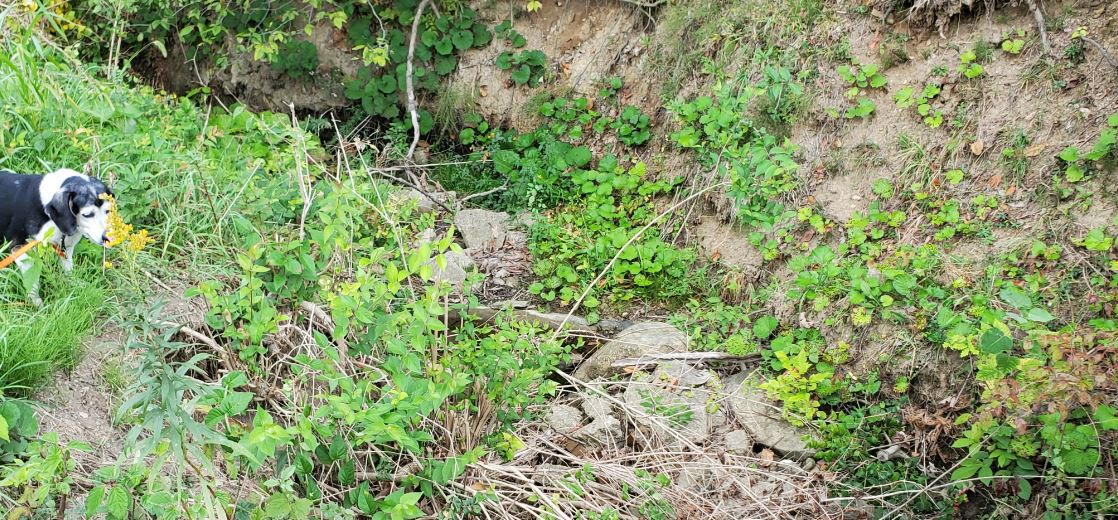
This photo is taken from the headwall we just built, facing downstream. This shows why I went with a stacked bag wall, rather than something more permanent. This photo may save me a lot of effort. Do you see it? [Hint: It’s not Sparky. ]
Here’s a close up photo:
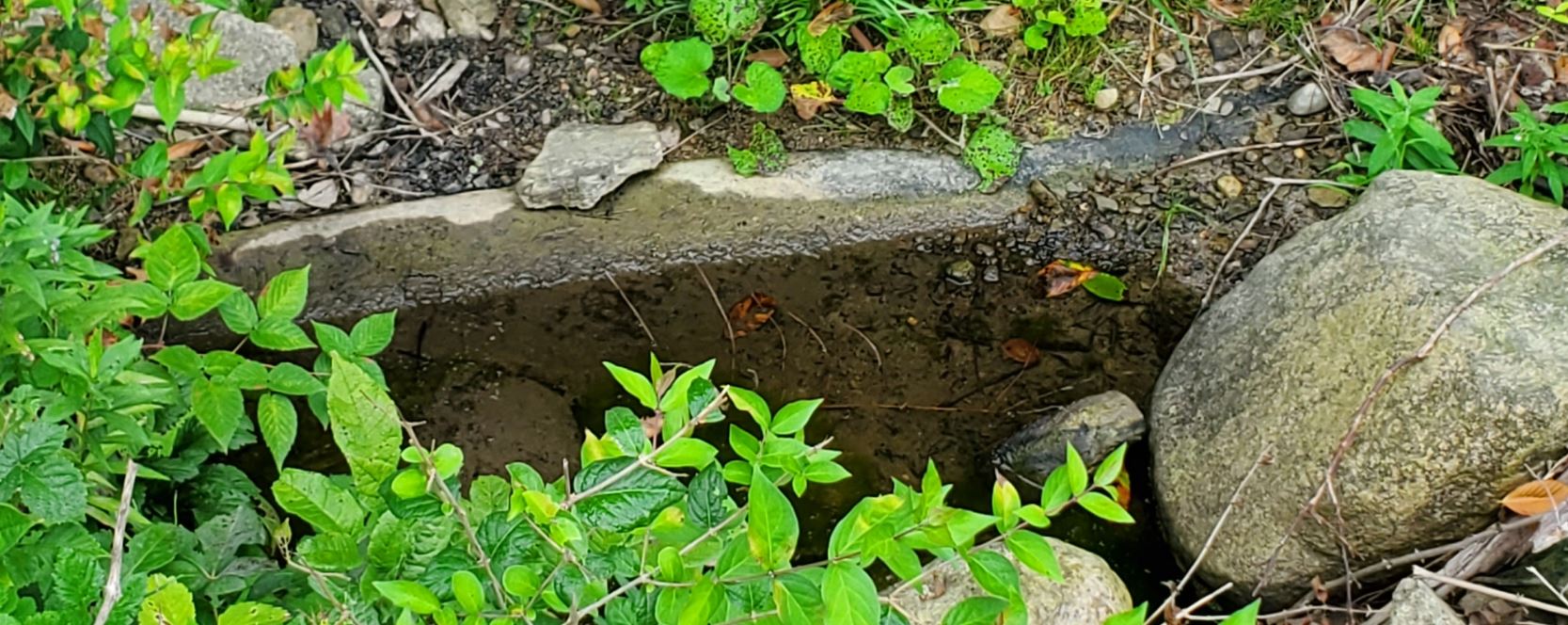
Behind that puddle of water, is a 24 inch high-pressure, natural gas pipeline. These pipelines are serious business. The gas company occasionally sends a PIG down the line to look for any damage to the pipe.
The PIG is a “pipeline inspection gauge” and looks like this.
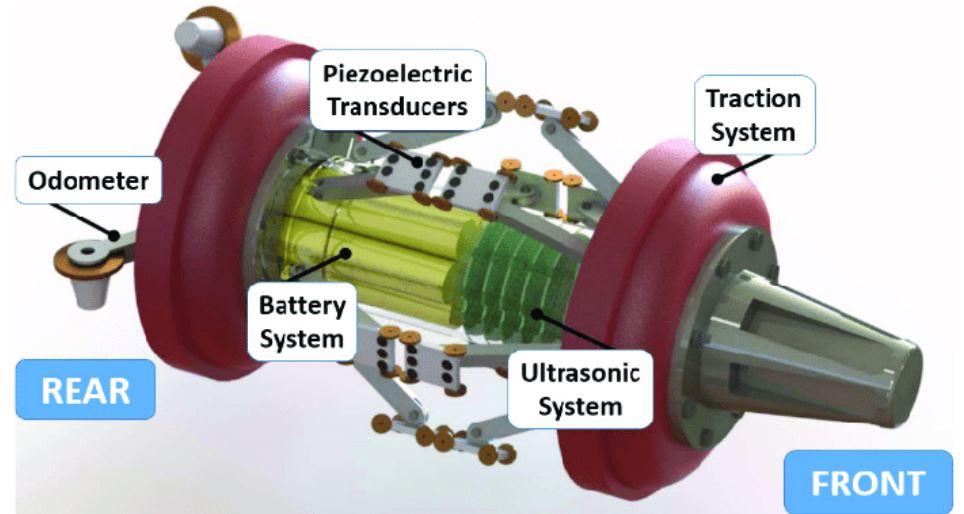
If the PIG detects an anomaly, a crew comes out to excavate the pipe for inspect for damage. The pipeline is then repaired or replaced. In the 20 years I’ve been here, that’s happened twice.
The first time was in 2007. It’s really not very deep for such a fancy pipeline.
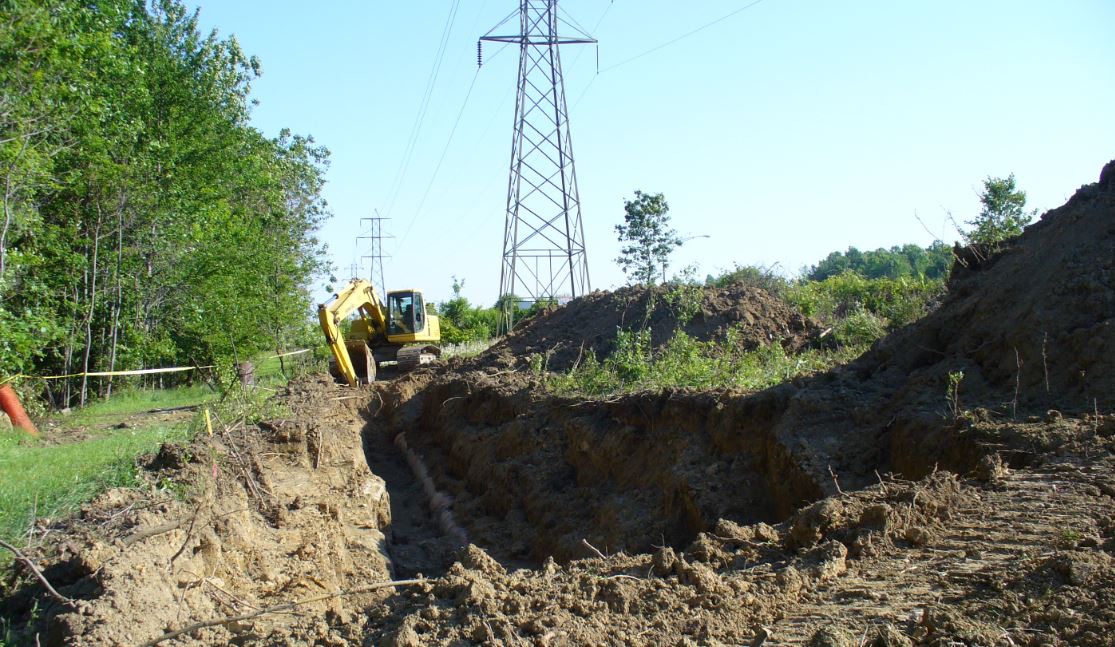
To get the heavy equipment back there, they were going to go over the ravine between my property and the church on Wallings Road. That seemed treacherous, so I suggested that they cut down a few trees, and make a road between the back parking lot of the church and my property.
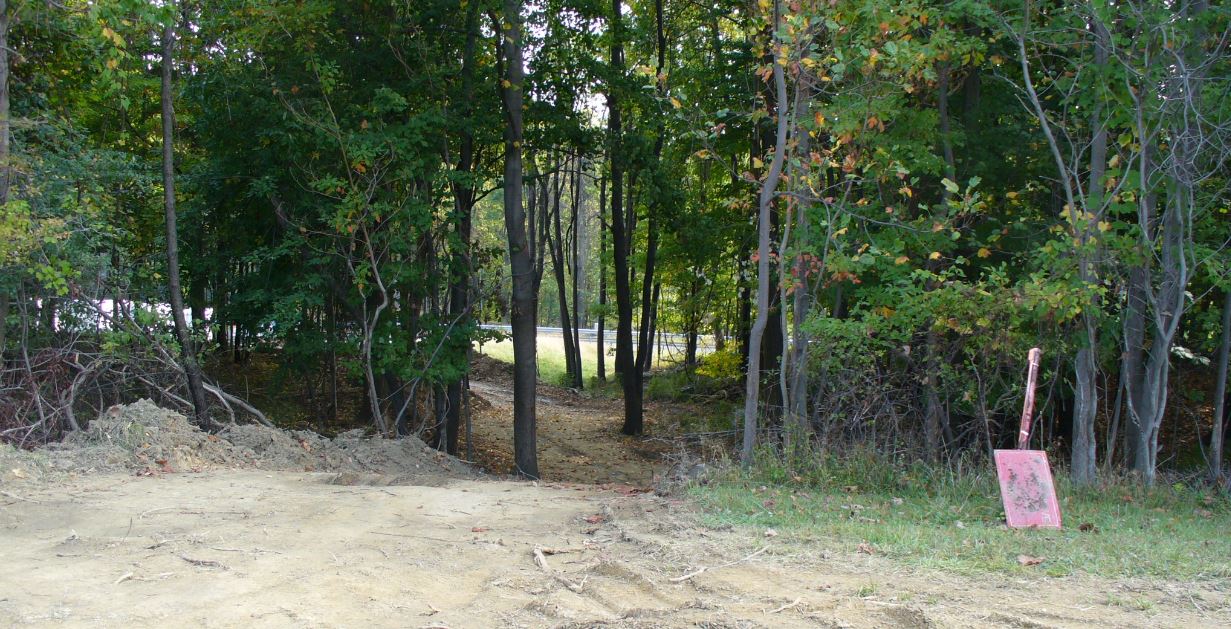
While they were onsite, I showed the foreman that the gas pipeline was completely exposed in the creek ravine between my property and the church. The pipeline was a foot above the creek bed.
A week later, they fixed that with, I think, 80 tons of limestone.
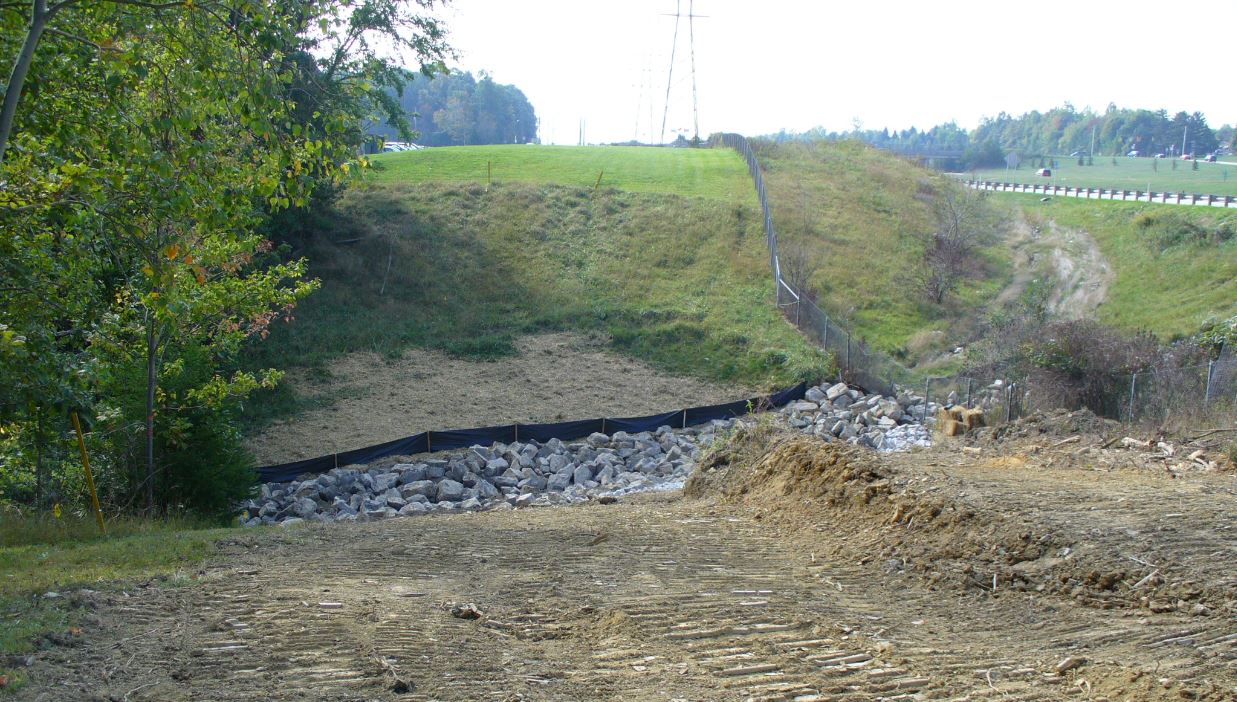
Oddly, they did not put a culvert pipe in. They dumped in a bunch of rip-rap, put down a nylon mesh, then more rip-rap. That was a 12 foot deep ravine. Now, Sparky and I can cross easily and erosion will never be an issue.
In 2018, the creek in front of my house had a similar issue. This is what it looked like.
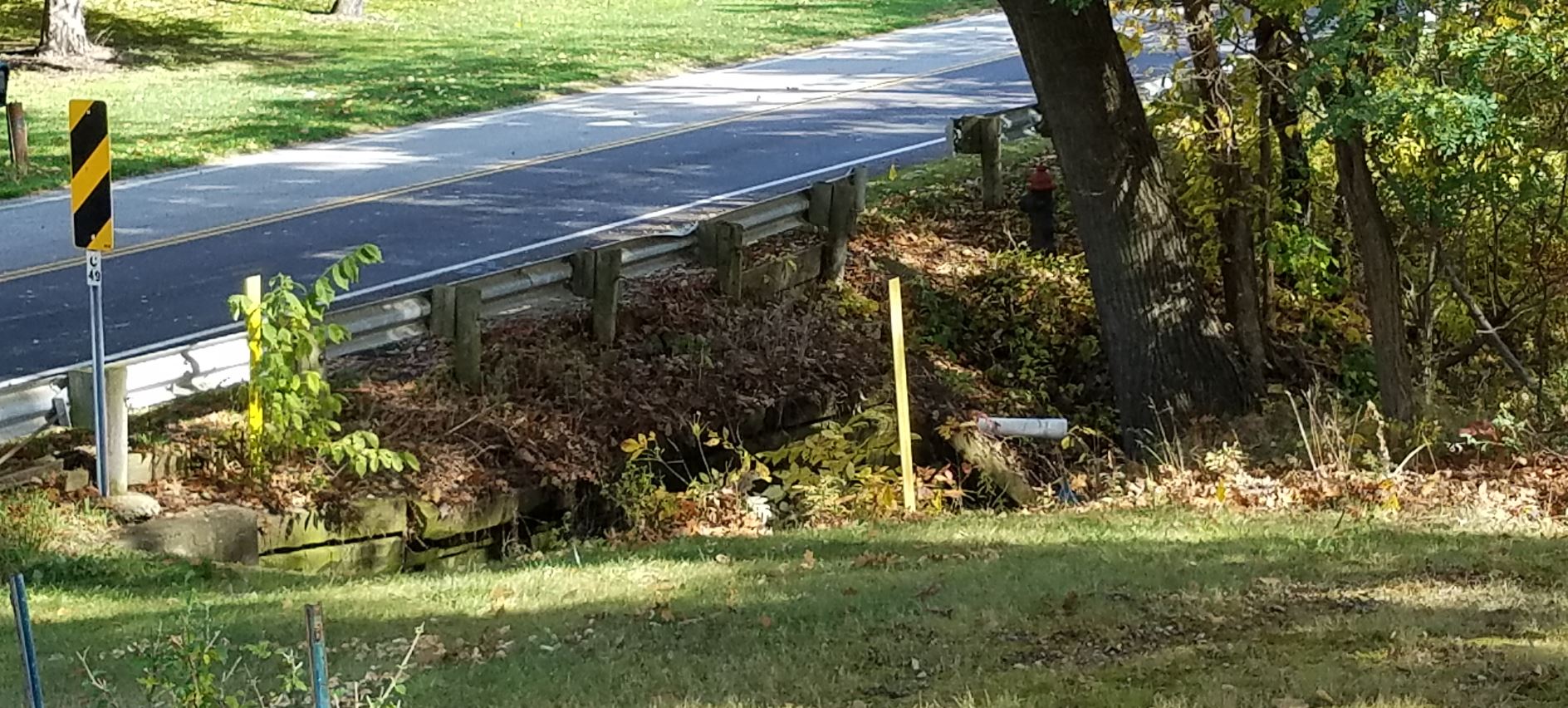
A culvert pipe starts the creek at that yellow and black sign. Notice the tree leaning over the road. Not so obvious is the condition of the retaining wall that keeps the road from falling into the creek.
Looking down into the creek, the high pressure gas pipeline is visible. There was a concrete shelf protecting it, but that had deteriorated.
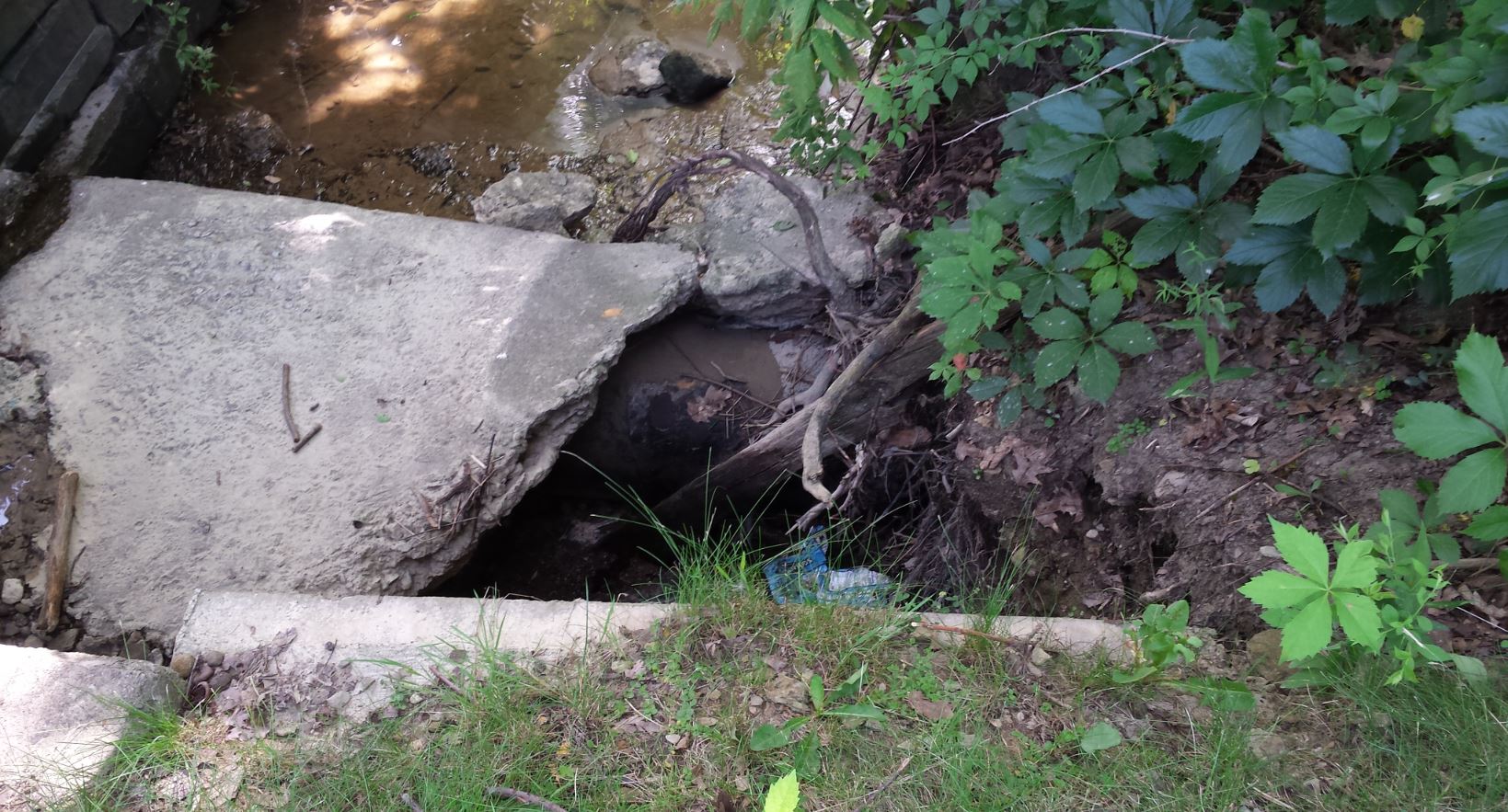
I emailed the city service director and that initiated a chain of emails that got the problem resolved two years later.
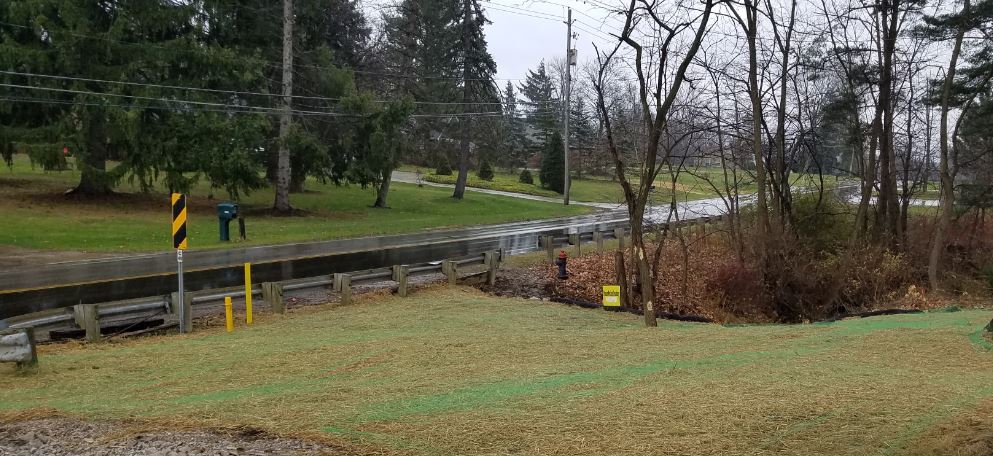
Two years isn’t quick, but I got about 30 feet more lawn and that scary tree is gone. I wasn’t consulted about the plan or given any notice. A bunch of contractors show up, and start working. I go out and talk to them, and they tell me about their part of the job. I don’t know who paid for it.
The gas company only had to rebuild that concrete shelf. The retaining walls are probably the city’s problem, and somebody cares about the creek.
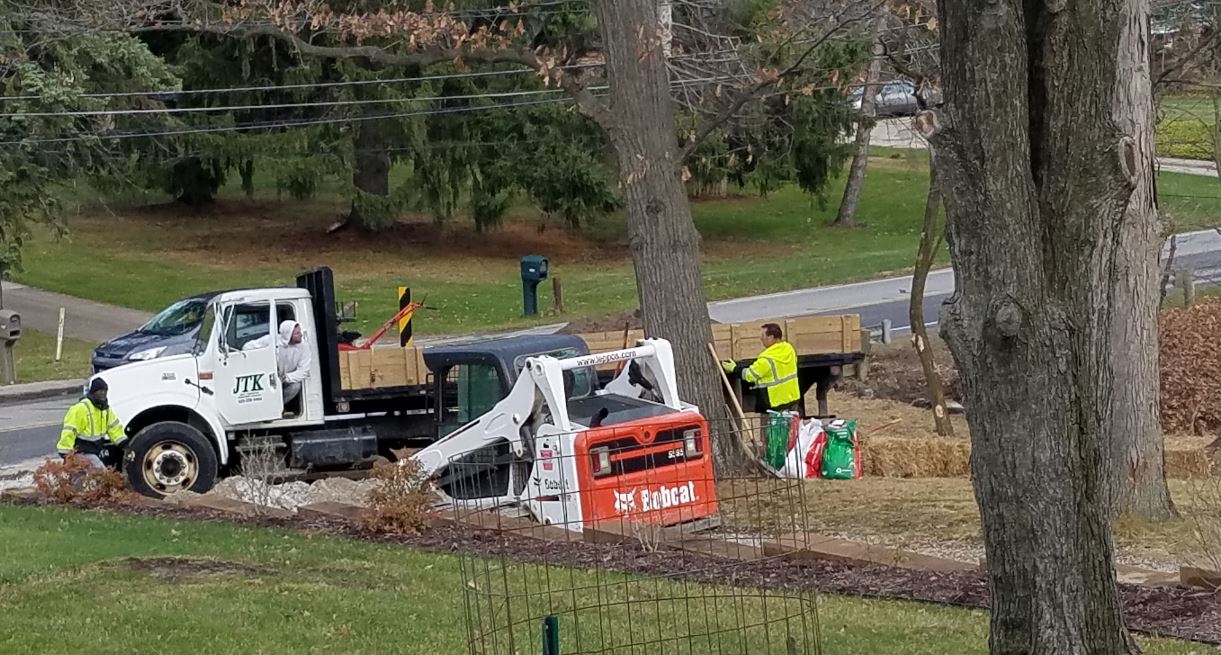
That is all to say that the exposed pipeline by the land-bridge changes everything about my headwall project.
The gas company cares about the pipeline. Somebody cares about the creek. If they do the job like the front creek, they may tear out the man-bridge and put a culvert pipe along my entire portion of creek. If they do the job like the back creek, they may just dump a bunch of rip-rap.
It’s been six years since I last did maintenance on the man-bridge. Here is a photo of Steve on a mini excavator. These things are great fun.
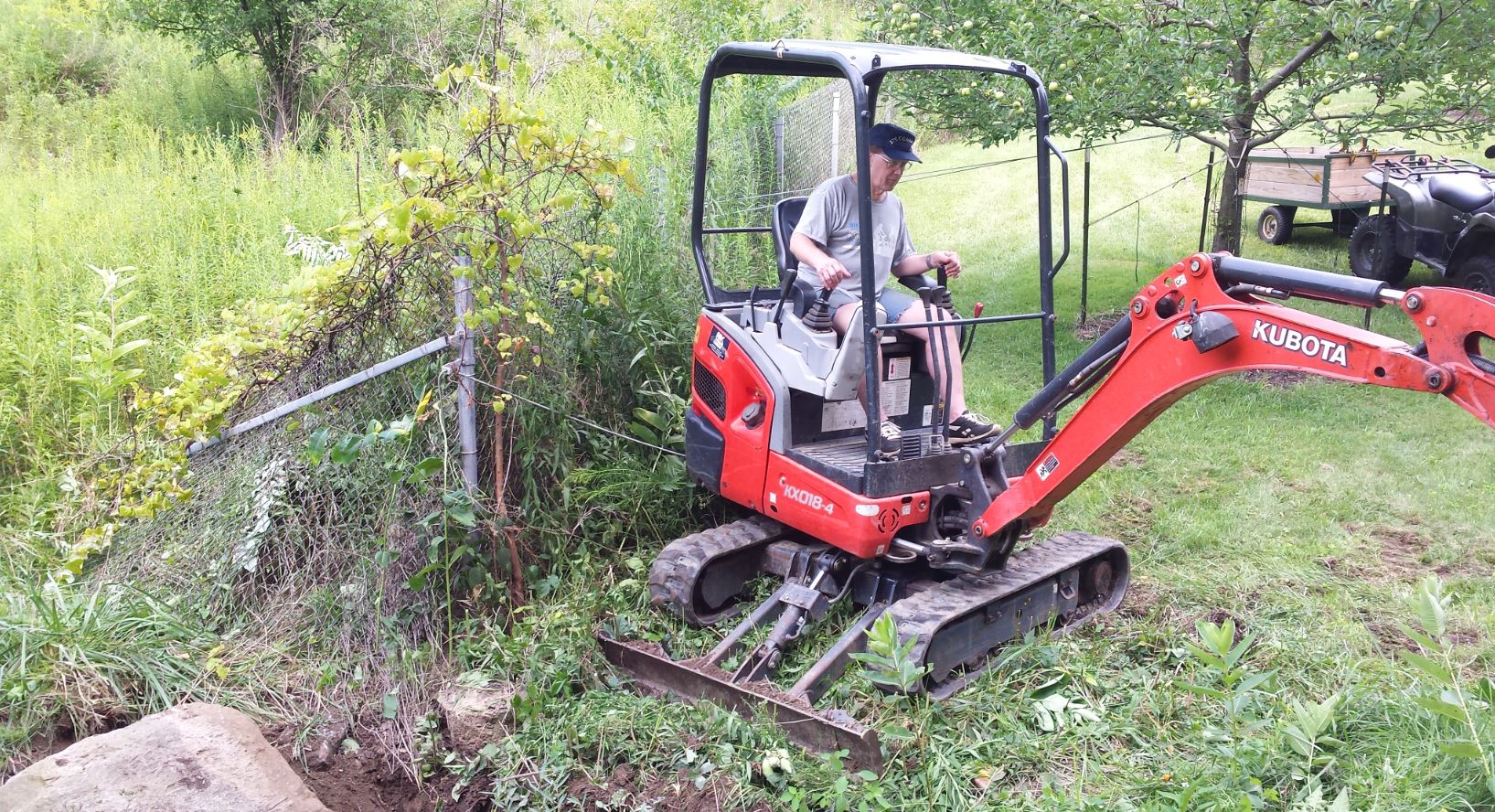
The erosion problem had to be addressed. I wouldn’t be opposed to pulling out the two 18″ culvert pipes and putting in a 36″ pipe. With the rent for the mini excavator and cost of a 36″ pipe, it would be a $4000 job. It’s not the money or the time, it’s the possibility that someone would come in and tear it out.
As it is, I’m in for $350 for bags of concrete, $50 for rebar, $50 for gravel and $50 for top soil. The headwall seems sturdy enough, and should address the erosion problem.
I had intended to address the creek bed erosion by dumping in a bunch of rocks. That would be about $1000, or a lot of effort harvesting rocks locally. Now, that’s not my problem.